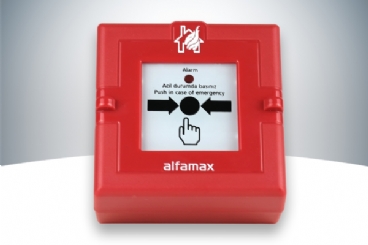Emergency lighting fixtures are fixtures designed to provide lighting during power outages or emergencies. Emergency lighting fixtures are generally used in buildings, offices, shopping malls, hospitals, hotels, schools and other commercial and industrial places. Emergency lighting fixtures automatically turn on when the power supply is cut off and provide enough light instantly, thus keeping people safe.
Emergency lighting fixtures include the following components:
• Emergency lighting fixtures can use different lighting sources such as fluorescent tubes, LED light sources or halogen lamps.
• Emergency lighting fixtures contain an internal battery to provide uninterrupted power supply. The battery is normally kept in a charged state and is activated when the power fails.
• Emergency lighting fixtures contain a charger that allows the battery to be charged. The charger normally checks the state of charge of the battery unless there is a power outage.
• Emergency lighting fixtures have a circuit that activates automatically when the electricity is cut off. This circuit allows the emergency lighting fixture to switch to battery power in case of a power failure, while normally operating on mains power.
• Emergency lighting fixtures may have some user-adjustable control functions. For example, settings such as brightness level or lighting duration can be made via the control unit.
Emergency lighting fixtures are used to illuminate a safe escape route in spaces during a fire, earthquake, power outage or other emergency. Therefore, the areas where emergency lighting fixtures are placed and their installation must comply with local fire safety regulations and standards.
What Does Emergency Lighting Fixtures Do?
Emergency lighting fixtures are fixtures used to provide safe lighting in the environment during emergencies and power cuts. These luminaires are activated in the event of an emergency, such as a power outage or fire, when normal lighting sources fail. Emergency lighting fixtures are mostly used in places such as hotels, businesses, hospitals, schools, public transportation vehicles and other public buildings. In an emergency, the lighting of these fixtures helps people evacuate safely from the building and help firefighters do their job more effectively.
These fixtures are usually connected to backup power sources such as batteries, generators or inverters. In normal operation, these sources charge the luminaires and provide sufficient power to operate the luminaires in an emergency. Emergency lighting fixtures are extremely important to ensure the safety of people in an emergency and are mandated by the laws of many countries.
How Do Emergency Lighting Fixtures Work?
Emergency lighting fixtures are special fixtures used in case of a power outage, fire or other emergency. These are luminaires designed to meet emergency lighting requirements and can be found in buildings, offices, industrial facilities, shopping malls and hospitals. Emergency lighting fixtures have special features that automatically activate and provide adequate lighting to keep users safe during emergencies. Emergency lighting fixtures automatically activate when the normal electricity supply is cut off and start working during emergencies. These luminaires are usually connected to an emergency power source such as an emergency gate or generator. In the event of a power outage, the luminaire's battery backup power supply is activated and feeds the emergency lighting source, thus keeping users safe with adequate lighting. Emergency luminaires may also have self-testing features such as test buttons or autonomous test features. These features are used to ensure fixtures are regularly tested and working. In addition, luminaires may also have visual or audible warnings.
Blog

Emergency lighting and guidance systems are considered among the solutions needed in emergency situations. In this context, emergency lighting and emergency guidance systems have a great role in evacuating people from the building.
More
Fire detection systems are devices that provide early detection and alarm of fires. Addressable fire detection systems, on the other hand, are more advanced fire detection systems used to ensure the fire safety of large or complex structures, buildings or facilities.
More
A wireless transmitter is a device that wirelessly transmits data, video or audio signals from one device to another. It usually works by connecting to a wireless network and uses wireless communication protocols such as Wi-Fi or Bluetooth technologies.
More